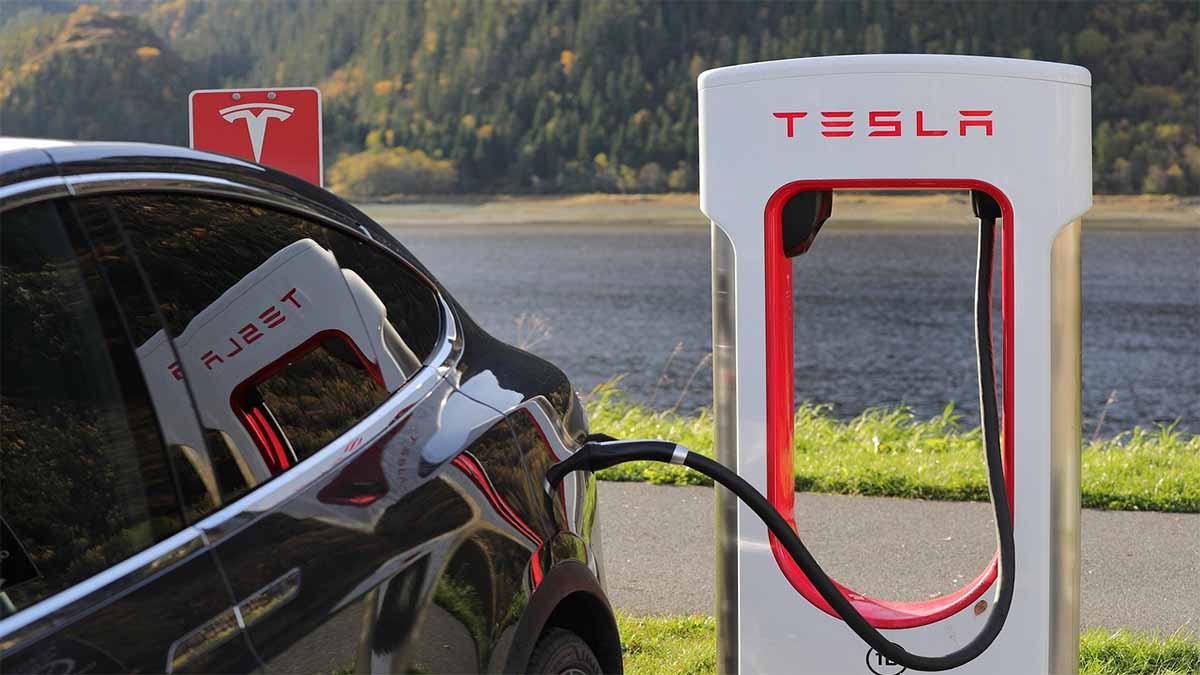 What Is the Tesla NACS Connector (SAE J3400)?
What Is the Tesla NACS Connector (SAE J3400)?
Oct 23, 2025
NACS is Tesla’s compact charging connector that has been standardized as SAE J3400. One plug covers both AC and DC. In 2025 this matters because most new North American EVs and charging sites are shifting toward native NACS access while mixed posts (NACS + CCS1) continue during the transition.
Compatibility
Vehicle inlet
Location
What you need to charge
NACS (SAE J3400)
Tesla Supercharger
Plug and charge (follow on-screen/app flow)
NACS (SAE J3400)
Third-party DC site
Use NACS post directly (where available)
CCS1
Tesla Supercharger
DC adapter + supported app flow (site/model dependent)
CCS1
Third-party DC site
Use CCS1 post as usual
J1772 (AC only)
Home/Work AC charging
J1772 wall unit or NACS-to-J1772 adapter for AC
NACS (vehicle)
Home/Work AC charging
NACS wall unit or mobile connector
If you are unsure about adapter support, check your vehicle maker’s guidance before buying third-party accessories.
How NACS differs from CCS1?
• One plug for AC and DC. With NACS you don’t swap heads between Level 2 and DC fast; the same handle does both.
• Smaller, lighter handle. The connector shell is compact and easy to seat with a firm click.
• Network access. Supercharger sites already use NACS hardware; many third-party networks are adding NACS posts so mixed forecourts will be common through 2025–2026.
Charging speed in practice
Connector potential and site speed are not the same thing. Your session power depends on your battery state of charge, pack temperature, the site’s cabinet capability, cable cooling, and sharing rules across stalls.
Treat peak kW as “up to” guidance. A steady, well-managed curve is more important than a headline number. If the handle or cable feels unusually hot, pause the session and report it to the site operator.
Standards status (J3400 and J3400/2)
SAE J3400 is the standardized name for the NACS interface. J3400/2 clarifies the connector/inlet physical architecture and paves the way for higher-power, safer fast charging as hardware evolves. For site owners and fleets, the takeaway is simple: investing in J3400-compatible hardware reduces future retrofit risk as more vehicles ship with NACS ports.
Quick notes for site operators
Use this short checklist when planning NACS support:
Handles and cablesSelect NACS DC handles matched to your cabinet’s max current and thermal profile (liquid-cooled vs naturally-cooled). Verify strain relief, boot, and latch durability under frequent cycles.
Software and paymentsConfirm app/RFID flows for mixed sites. Expose plug-and-charge where supported. Keep error copy simple and actionable.
Bay layout and signageMark NACS vs CCS1 positions on pedestals and on the ground. Route cables so the left- or right-side inlets can reach without sharp bends.
Power sharing and uptimeModel load sharing across pairs/quads. Monitor temperature derates in hot/cold seasons and tune setpoints to avoid unnecessary cutbacks.
Training and safetyCoach staff on latch checks, connector seating, and what to do if an adapter is stuck. Accept only compliant, breakaway-safe accessories.
Connector anatomy
NACS uses five conductors: two high-power contacts for DC/AC, one protective earth, and two low-voltage pins for proximity and control pilot. The control pilot negotiates charging and monitors safety states; proximity detects latch position and enables safe disconnect. The design manages temperature at the contact level, so practical current is governed by thermal limits rather than a single fixed number in isolation.
What this means for drivers and buyers
If your new EV has a NACS port, you can use NACS posts at Superchargers and at third-party sites that offer them, plus NACS AC charging at home or work. If your EV still uses CCS1, look for official DC adapters and confirm site access in the app before you rely on a specific location. During the transition, pick destinations that show live port types and availability to avoid detours.
FAQ
Is NACS the same as SAE J3400?Yes. NACS is the original name; SAE J3400 is the standardized designation used by industry and regulators.
Do I need a special home charger?If your car has a NACS inlet, a NACS wall unit keeps things simple. If you already own a J1772 wallbox, an AC adapter can bridge the gap for many vehicles.
How fast will my car charge on NACS?It depends on your car and the site. Expect high power when your battery is warm and at lower state of charge, tapering as it fills. The connector does not guarantee a specific kW; the site and the vehicle do.
Can any CCS1 car use a Supercharger with an adapter?Access depends on the site, software flow, and the adapter’s approval. Check official guidance for your model and region. Avoid unapproved “breakaway” devices that can overheat or disable the latch.
What should fleets and property owners do in 2025?Plan for mixed posts. Add NACS handles where utilization justifies it, keep a small CCS1 footprint during the transition, and make signage unambiguous.
What Workersbee can do for you?
Connector hardware, ready for today’s mixNACS (SAE J3400), CCS1, and CCS2 handles—naturally-cooled and liquid-cooled—matched to your cabinet power and climate.See: Workersbee EV connector range
Migration kits and guidanceCable + handle swap options, strain-relief and boots, labeling templates, and bay signage suggestions so mixed NACS/CCS sites stay clear and usable.
Engineering supportHelp with derating policy, temperature monitoring, and power-sharing settings to keep sessions stable at peak hours.
Compliance and testingBuild aligned with SAE J3400/J3400-2 intent; routine mechanical and thermal cycle tests; documentation for vendor approval workflows.
Customization and scaleGrip textures, overmolds, and branding options; batch consistency for multi-site rollouts.
Not sure which handle to choose?Tell us your cabinet power and ambient conditions. We’ll recommend a matched pair for steady performance.→ Workersbee NACS connector→ Talk to an engineer (info@workersbee.com)
Related article:
What Is a Type 2 EV Connector?
What is the J1772 Connector?
Read More

 What Is the Tesla NACS Connector (SAE J3400)?
What Is the Tesla NACS Connector (SAE J3400)?